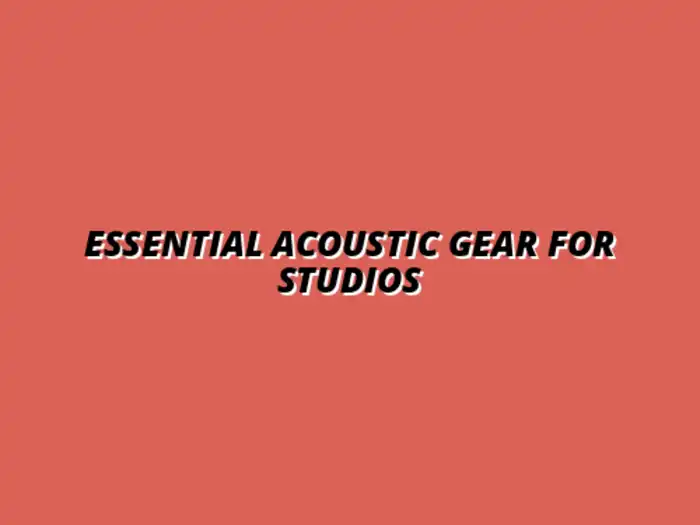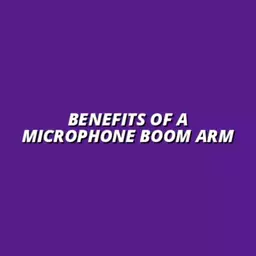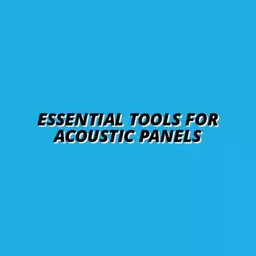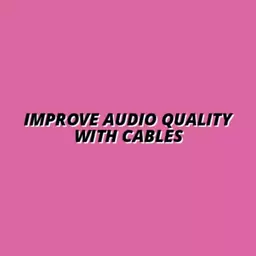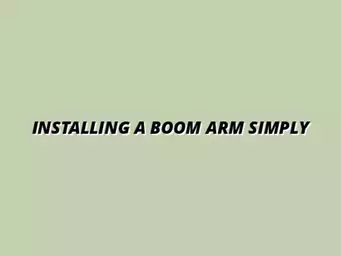Quality audio production is more than just a hobby; it's an art that requires the right tools and knowledge. Have you ever wondered how professional sound studios achieve that crisp, clear audio? The secret lies in understanding the importance of acoustic gear in home studio setups.
What You Will Learn
- The vital role of quality microphones in capturing audio nuances.
- How studio monitors enhance sound accuracy for better production.
- The necessity of acoustic treatment in optimizing sound quality.
- Tips for balancing budget and performance when purchasing gear.
- The importance of investing in versatile equipment that grows with your skills.
Key Takeaways on Acoustic Gear for Home Studios
Understanding the balance between budget, performance, and personal preference is crucial for setting up an effective home studio. Below is a summary of essential gear and practices to consider.
Microphones
Choose dynamic or condenser mics based on your recording needs to capture sound effectively.
Studio Monitors
Prioritize flat frequency response for accurate sound reproduction during mixing and mastering.
Audio Interfaces
Invest in a reliable interface that offers low latency for seamless audio processing.
Acoustic Panels
Use acoustic panels to reduce echo and enhance clarity in your recordings for professional sound quality.
Understanding the Importance of Acoustic Gear in Home Studio Setups
When it comes to creating the perfect home studio, the right acoustic gear plays a vital role in achieving high-quality sound. I’ve learned that having the right tools can make all the difference in how your audio is captured and produced. It’s not just about the microphone or the monitors; it’s about how each piece of equipment works together to create a professional sound environment.
Whether you’re a streamer, podcaster, or musician, investing in quality equipment will enhance your audio experience. Imagine recording your voice with an exceptional microphone that captures every nuance! This equipment helps to minimize unwanted noise and ensures that your recordings sound clear and professional. At Tidy Audio Desk, I see firsthand how the right setup can transform a workspace. For streamers looking to enhance their audio environment, consider reading up on acoustic panels and their impact on sound quality.
Exploring the Role of Quality Equipment in Sound Production
Quality equipment is not just about being fancy; it’s about functionality. Here are some key components that contribute to excellent sound production:
- Microphones: Different types capture sound differently.
- Audio Interfaces: They connect your microphone to your computer.
- Studio Monitors: These allow you to hear your sound accurately.
- Headphones: A good pair helps you catch the smallest details.
Each piece of equipment serves a unique purpose, and investing in quality can lead to better recordings. Think of it this way—using a high-end microphone can make your voice sound more vibrant and full, while a good interface ensures that sound is processed without distortion. I find that this investment pays off in clearer and more professional audio.
💡 Planning an echo-free audio desk? Start with desk setup inspiration and acoustic routing. 👉 Explore the Setup Ideas Guide
Often, questions arise when deciding what equipment to purchase for a home studio. Here are some frequently asked questions to guide you:
FAQs: Acoustic Gear for Home Studios
-
What are the most important factors to consider when buying a microphone?
Consider the type of recording you'll be doing (vocals, instruments, etc.), the microphone's polar pattern (directionality), and its frequency response. Dynamic microphones are great for live sound and handling loud sources, while condenser microphones are more sensitive and better for studio recording.
-
How can I set up my home studio while staying within my budget?
Start with the essentials: a decent microphone, audio interface, and studio monitors or headphones. Prioritize acoustic treatment early on, as it can significantly improve sound quality without breaking the bank. Look for sales and consider buying used equipment.
-
What are some beginner-friendly acoustic treatment options?
Acoustic panels and bass traps are effective and relatively easy to install. You can also use thick blankets or DIY panels to absorb sound reflections. Focus on treating the areas around your recording space, such as walls and corners.
Balancing Budget and Performance for Optimal Results
It’s easy to get caught up in wanting the best of everything, but balancing your budget with performance is crucial! Here are some tips to achieve that sweet spot:
- Set a clear budget before shopping.
- Prioritize essential gear first (like a good microphone).
- Look for brands known for quality at a reasonable price.
- Check online reviews and user testimonials.
Remember, you don’t always need the highest-priced equipment to get great results. I’ve found that often, mid-range options can provide a fantastic balance between performance and affordability. At Tidy Audio Desk, we focus on offering products that help you maximize your investment without breaking the bank! You may also be interested in personalized cable sleeves for microphones to keep your setup tidy.
Pro Tip
Did you know? Using acoustic treatment in your home studio can not only improve your sound quality but also enhance your overall recording environment. Consider adding bass traps and diffusers to manage low frequencies and reflections in your room. This simple investment can elevate your audio production significantly!
Summarizing Key Takeaways on Acoustic Gear for Home Studios
Creating the perfect home studio is about more than just having the right gear; it's about knowing how to use that gear effectively. Throughout this article, we've explored the *importance of quality equipment* and how it can significantly enhance your sound production. If you're just starting out or looking to upgrade, focusing on essential aspects like *microphones*, *studio monitors*, and *acoustic treatment* will set you on the right path.
We’ve recommended various tools and practices that cater to both beginners and seasoned creators. From affordable microphones to high-quality studio monitors, every piece of gear plays a crucial role in achieving professional-sounding results. Remember, even budget-conscious options can deliver impressive outcomes! Here are some key takeaways:
- Invest in quality microphones that suit your recording style.
- Choose studio monitors that provide accurate sound reproduction.
- Don’t skimp on acoustic treatment to enhance overall sound quality.
- Consider versatile equipment that grows with your skills.
Recap of Recommended Gear and Setup Practices
Before you dive into building your home studio, let's recap the essential gear and best practices we discussed. Selecting the right equipment is a balance between *budget*, *performance*, and *personal preference*. Here’s a quick summary of what to look for:
- Microphones: Look for dynamic or condenser mics based on your recording needs.
- Studio Monitors: Prioritize flat frequency response for accurate sound.
- Audio Interfaces: Invest in a reliable interface that offers low latency.
- Acoustic Panels: Use them to reduce echo and enhance clarity in your recordings.
By focusing on these elements, you can create a functional and aesthetically pleasing workspace. I can personally vouch for the impact of having the right acoustic gear in my setup at Tidy Audio Desk. It has transformed not only my sound quality but also the overall efficiency of my recording sessions! Also there are simple and damage free ways to mount acoustic panels.
Final Thoughts on Creating an Effective Home Studio
In conclusion, building an effective home studio is achievable with the right guidance and equipment. Remember, it’s not just about having the most expensive gear; it’s about understanding how to optimize what you have! Keep experimenting with your setup until you find what works best for your creative process.
As you embark on this exciting journey, let your workspace reflect your personality. Tidy Audio Desk is here to help you every step of the way—whether it's through innovative cable management solutions or practical tips on setting up your gear. So, are you ready to create a sound haven that inspires your best work?
Engaging with the Community: Questions and Further Resources
Feeling confident about your journey into home studio setup? Engaging with the community is a fantastic way to learn from others’ experiences and share your insights! Many aspiring producers often have similar questions as they start this journey, and it’s always helpful to connect with others who share your passion for sound.
Let’s dive into some common questions you might have about acoustic gear and home studio setups:
- What are the most important factors to consider when buying a microphone?
- How can I set up my home studio while staying within my budget?
- What are some beginner-friendly acoustic treatment options?
Links to Further Reading and Helpful Resources for Aspiring Producers
For anyone looking to expand their knowledge of home studios and acoustic gear, there are countless resources available. Here are some links to articles and videos that I’ve found particularly helpful:
- Recording Revolution - Great for tips on recording techniques and gear.
- Sound on Sound - Offers in-depth reviews and articles about audio equipment.
- Pro Sound Web - A community hub for audio professionals with valuable insights.
Exploring Community Experiences with Soundproofing Materials and Acoustic Panels
Lastly, don't forget the power of community feedback! Many creators have shared their experiences with various soundproofing materials and acoustic panels. Engaging with these insights can help you make informed decisions and discover new ways to enhance your home studio environment.
Consider joining forums or social media groups dedicated to audio creation. You’ll find a wealth of knowledge and support from fellow enthusiasts. Trust me, the connections you make can be just as valuable as the gear you choose! A clutter free workspace contributes to quality audio, by following these effective use of velcro cable ties your workspace will be tidy and effective.
Additionally, properly managing cables is an important consideration for the overall look and feel of your studio. You can find some cable management tips for your desk to help keep your audio equipment tidy and organized.
Recap of Key Points
Here is a quick recap of the important points discussed in the article:
- Invest in quality microphones that match your recording style for clearer sound capture.
- Select studio monitors that offer accurate sound reproduction to ensure precise mixing.
- Prioritize acoustic treatment to minimize echo and enhance recording clarity.
- Balance your budget with performance by focusing on essential gear before expanding your setup.
- Consider versatile equipment that can grow with your skills and needs.

